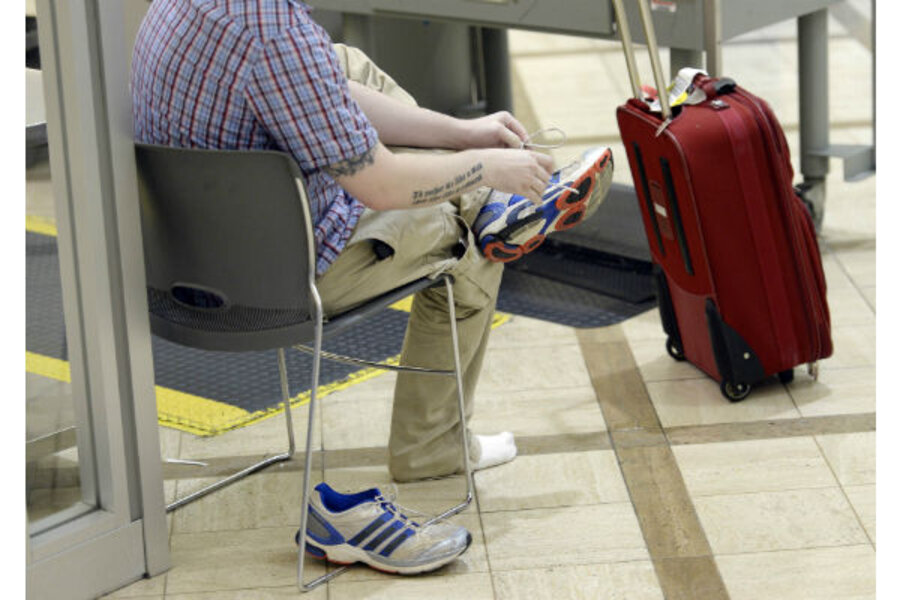Shoe bomb advisory: Routine update or sign of a covert new bomb design?
US warnings to airlines to be on the lookout for shoe bombs are either a routine "update" or a worrisome sign that Al Qaeda operatives are at work on new explosives, depending on which report one reads.
During a press conference Thursday at Los Angeles International Airport, Department of Homeland Security chief Jeh Johnson characterized the warning, issued Wednesday, as a routine advisory.
"As you know, concerns about shoe bombs have been out there for years,” said the DHS secretary. “Every once in a while we update our advisories, we modify our procedures, so we remain vigilant in dealing with the various potential threats that exist.”
Other DHS sources told Reuters that the warning arises from concerns that Ibrahim Hassan al-Asiri, a Saudi citizen who has been implicated in previous failed attacks on airliners in 2009 and 2010, may have developed a new bomb design.
While officials said they do not have any concrete information about specific shoe bomb plots, they do have information that suggests that a Yemeni branch of Al Qaeda has been working on developing bombs that could subvert airline security systems, CNN reports.
A similar warning issued earlier this month to airlines warned that terrorists may attempt to smuggle explosives in toothpaste tubes. That warning prompted the Transportation Security Administration (TSA) to ban all liquids in carry-on flights from the United States to Russia as part of heightened security around the Winter Olympics in Sochi.
This week’s warning focused on US-bound international flights and is not related to the Olympics.
Americans have been required to remove their shoes and send them through X-ray scanners at security checkpoints since would-be British shoe bomber Richard Reid tried to ignite explosives hidden in his shoes while on a flight bound for Miami from Paris in 2001. However, many international airports outside of the United States do not have such a requirement.
This week's warning went out to airlines that fly out of more than 30 locations across Europe, the Middle East, and Africa. Officials specifically urged security officers at Amsterdam’s Schiphol airport as well as London’s Heathrow and Gatwick airports to increase their security measures.
The Gatwick and Heathrow airport websites advise travelers to keep their shoes on during security checks unless security personnel specifically request that they remove them.
The Dutch National Coordinator Terrorism Suppression and Safety (NCTV) has said the current warnings “do not give reason to impose extra measures on top of the sharpened measures already in place for flights to the United States,” according to Dutch news outlet NLTimes.
In the United States, TSA as of October 2011 began allowing frequent travelers willing to submit to a preflight background check to leave their shoes on at select airport security checkpoints. TSA has also eased up on restrictions that prohibited passengers from bringing lighters on board aircraft, “in an effort to concentrate resources on detecting explosive threats,” according to the TSA website. The lighter ban was initially imposed in April 2005 as a result of a congressional directive.
Material from The Associated Press was used in this report.







